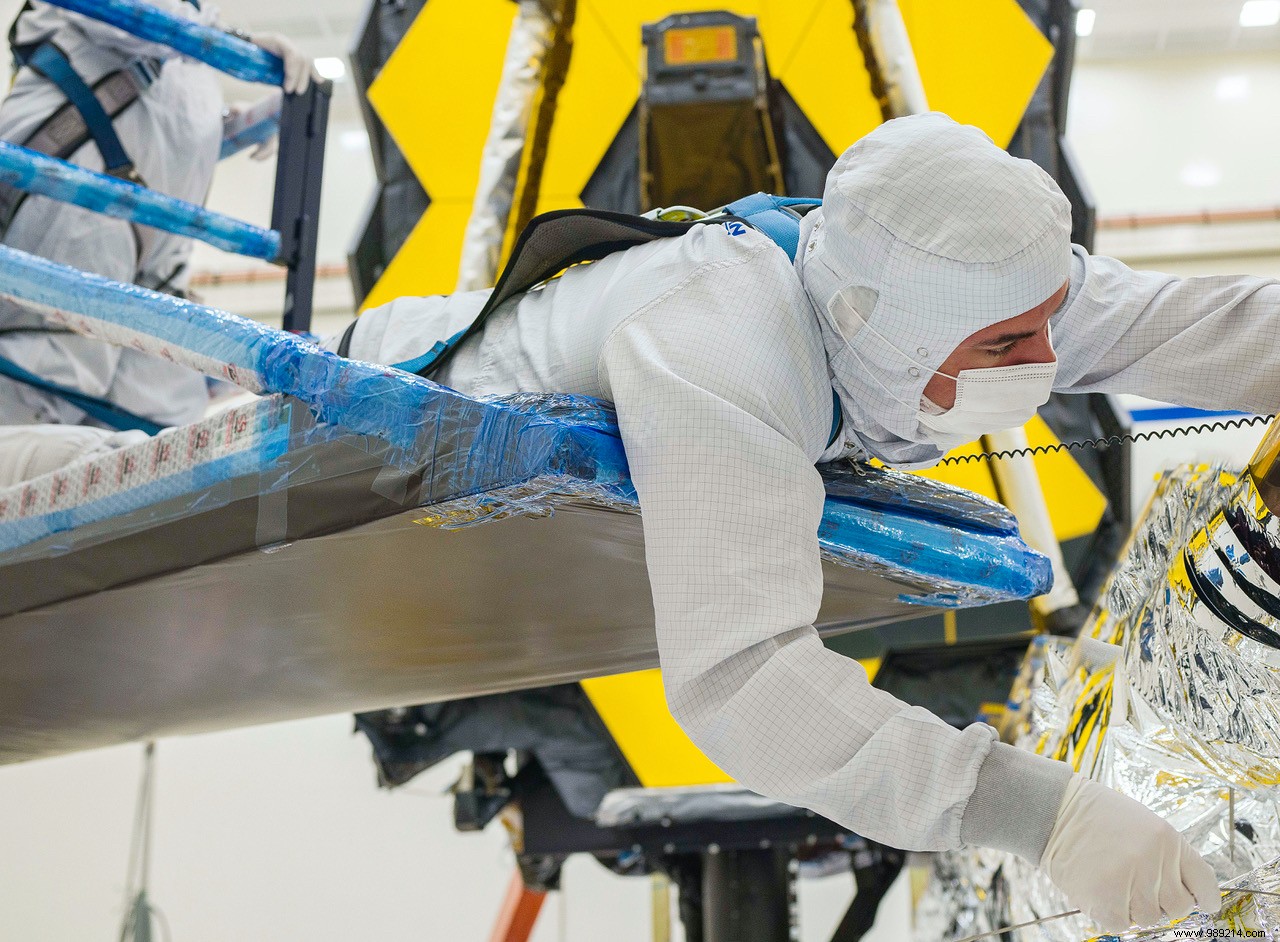The size of a tennis court, the sun visor of the James Webb Telescope has been folded one last time. This important step, which requires incredible attention to detail, brings us closer to its launch scheduled for October.
The James Webb Telescope, one of the most anticipated space observatories, will focus entirely on infrared wavelengths. These lengths are ideal for probing the early Universe. But to detect faint heat signals from very distant objects, you need to ensure that there is an almost complete absence of stray heat sources.
To carry out its mission, the telescope will therefore be positioned around the Lagrange point L2, 1.5 million kilometers from Earth on the side opposite the Sun. To protect it from our star, NASA engineers also imagined a sun visor 22 meters long by 11 meters wide , composed of five very thin layers of extremely reflective materials.
This incredible structure should keep the telescope mirror (the structure in yellow) in the shade, at temperatures around -223°C . Note that some of the instruments on board will also be kept cool (-258°C) thanks to an active cooling system.
That being said, engineers at Northrop Grumman in Redondo Beach, Calif., recently successfully folded and boxed this infamous sunshade. The goal:that it can fit into the fairing of the Ariane 5 rocket, responsible for releasing the observatory into space. The structure had obviously been specially designed to fold around both sides of the telescope and fit within the limits of its launcher (5.4 meters in diameter).
“There's nothing really analogous to folding a tennis court-sized sun visor, but it's quite similar to packing a parachute ” , says Jeff Cheezum, who oversaw the design of the structure. " Just as a skydiver needs his parachute packed properly to open perfectly, Webb will need his canopy stowed perfectly to ensure it opens normally and maintains its shape " .
It took engineers a full month to fold this incredible structure. The process began by laying the five layers as flat as possible, details NASA. Then the layers were lifted vertically and propped up on special support equipment so that they could be properly restrained for folding. A team then carefully folded each layer in a zigzag fashion to create accordion-like membrane stacks on either side of the telescope.
The first layer of the sun visor is only 0.005 cm thick , while the other four layers are half as thick. Folding such thin layers was therefore another challenge. The process also had to take into account the sun visor's 90 different tension cables, which must be stowed in a specific way to ensure the sun visor is properly deployed.

Finally, one of the more complex aspects of the folding process involved aligning the membrane stacks. Each of the layers of the sunshade has hundreds of holes arranged in such a way as to prevent light and heat from passing to the optical elements of the telescope. These holes had to be aligned during bending so technicians could insert "pins" through them. These pins (there are 107 of them) will help hold the layers for launch, as well as unfold the sun visor once in space.
Over the next three months, engineers and technicians will finish packing and securing the sun visor. It will stay that way until launch, and will only unfold once in space.